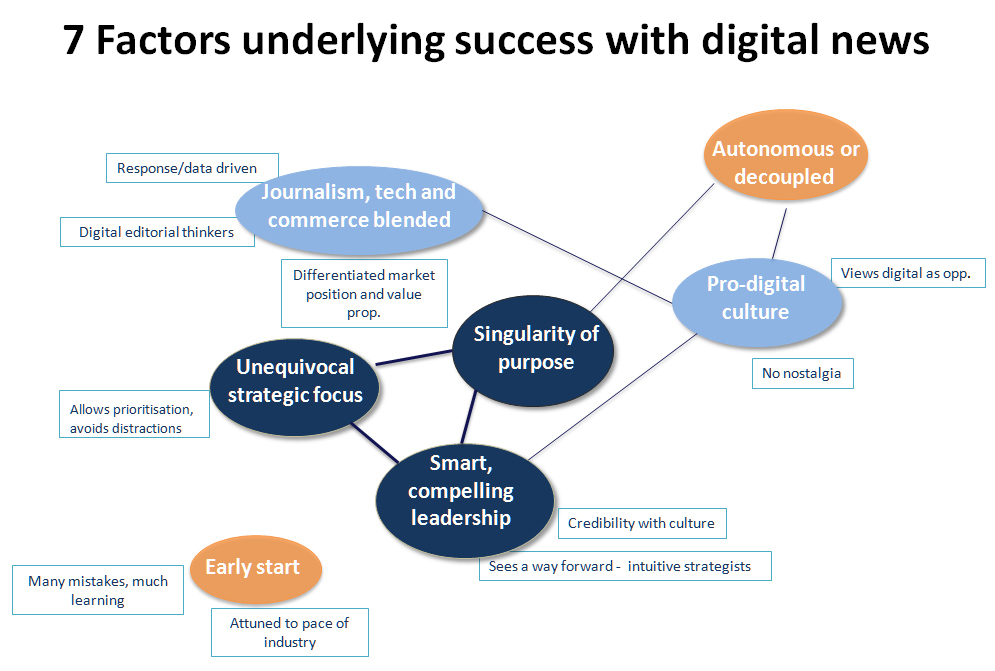Last week saw the publication of my new book, “Innovators in Digital News“, exploring several key players in the digital news industry – the Guardian, the New York Times, Quartz, BuzzFeed and Vice.
It identifies and discusses the common elements that underlie their success, and provides pointers for how all players, legacy and clean sheet, can seize the growth potential that digital markets present.
How do they operate? How do they innovate?
Based on first hand research, the book’s case studies explore how these organisations approach digital news. How do they approach digital journalism? How are these activities are anchored in the larger organisation? What corporate strategies, cultures and competencies do they have?
7 Elements integral to success with digital news
The final chapter of the book sifts through the detail of the case studies to identify factors common to these organisations that contribute to their success.
It highlights a set of interlinked elements which need to be viewed systemically: their power lies in their combination, in the virtuous circle that is created when all are present and function together.
At the core of these are three interrelated elements which are standard practice for high-performing organisations – a singularity of purpose about the role of the organisation and the ‘value’ (in management terms) it creates for its users, high calibre leadership from smart individuals who have developed a viable strategic path forward and have credibility with the culture of the organisation, and a clear and unequivocal strategy that sets boundaries, allows prioritisation, and avoids distractions.
Then come two elements specific to some to the emerging digital news industry and to the nature of competition and consumption within it.
The first is a blending of journalistic, technological, and commercial competencies, involving a deep integration of tech into editorial processes, the presence of digital editorial thinkers, and content creation processes that are response and data driven.
Second comes a ‘pro-digital culture’ that views the digital news arena as an opportunity (albeit a highly competitive field), that is not particularly nostalgic about the old legacy days, and which is open-minded about using the functionalities of digital technology to reinvent quality news.
The final two common elements are not easy to acquire or replicate.
The first is an early start.
The longer a news organisation has been active in the digital field, the more it has learned about how this functions, and the more attuned it is to the pace of the industry and how innovation is best approached.
The final element involves autonomy – the ability to innovate and respond as directly as possible to opportunities and threats in the digital news market.
This is directly influenced by ownership arrangements (and the priorities of those stakeholders) and by the financial resources available, both elements that a digital news organisation has limited opportunity to influence.

Download the first chapter and Executive Summary here: http://reutersinstitute.politics.ox.ac.uk/publication/innovators-digital-news
Find the book at Amazon: http://amzn.to/1VyEvDh
A version of this article was published on 22 July 2015 in TheMediaBriefing: http://www.themediabriefing.com/article/lessons-from-innovators-in-digital-news
© Lucy Küng 2015. All rights reserved.